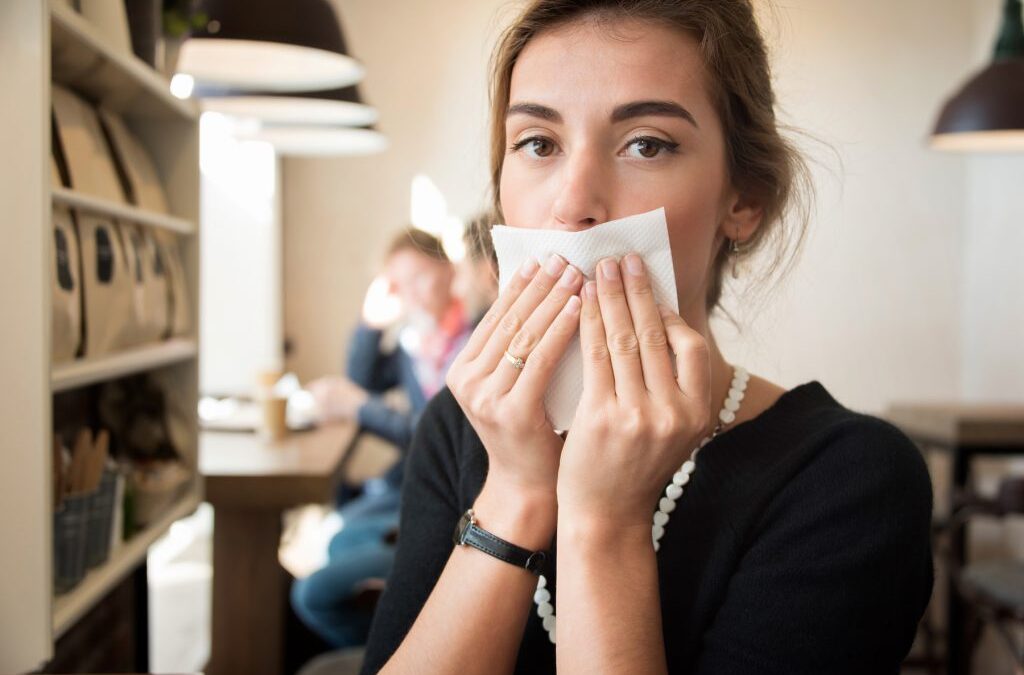COVID-19 Transmissibility Through the Air: Sneezing, Coughing, and Other Aerosols
COVID-19 is primarily transmitted through respiratory droplets and aerosols expelled during activities like sneezing, coughing, talking, and even breathing. The airborne nature of SARS-CoV-2 has profound implications for public health, influencing guidelines on masking, ventilation, and testing. Here’s what you need to know about COVID-19’s airborne transmissibility and how to protect yourself.
Click here to purchase ASSURE-100 on Amazon.com, or for local Hawaii pick-up, click here to purchase from our Shopify site.
How Does Airborne Transmission Work?
Airborne transmission occurs when infectious particles remain suspended in the air and are inhaled by others. These particles vary in size:
- Large Droplets:
- Expelled during coughing or sneezing, these droplets settle quickly and typically travel short distances (up to 6 feet).
- Direct contact with these droplets can lead to infection.
- Aerosols:
- Smaller particles, often referred to as aerosols, can linger in the air for extended periods and travel further than 6 feet, especially in poorly ventilated spaces.
- A study published in Nature found that SARS-CoV-2 aerosols can remain viable in the air for up to 3 hours under laboratory conditions.
Activities That Increase Airborne Transmission Risk
- Sneezing and Coughing:
- Sneezing produces up to 20,000 droplets, many of which can carry viral particles. A single sneeze can propel aerosols over 20 feet, depending on environmental conditions.
- Coughing generates fewer droplets than sneezing but still poses a significant risk for transmitting infectious particles.
- Talking and Singing:
- Loud talking and singing expel aerosols at higher rates, which has been linked to superspreader events.
- Breathing:
- While less intense than sneezing or coughing, normal breathing continuously releases aerosols, particularly in enclosed spaces.
Preventive Measures to Reduce Airborne Transmission
- Improve Ventilation:
- Ensure proper airflow in indoor spaces by opening windows, using fans, or installing HEPA filters. The CDC provides guidelines for ventilation in homes.
- Wear Masks:
- High-quality masks, such as N95 or KN95 respirators, filter out aerosols effectively and are especially important in crowded or poorly ventilated areas.
- Practice Physical Distancing:
- Maintain at least 6 feet of distance from others to minimize exposure to larger respiratory droplets.
- Regular Testing:
- Use rapid COVID-19 tests to identify infections early, particularly if you experience symptoms like coughing or sneezing.
Role of Environmental Factors
Airborne transmission risk increases under specific conditions:
- Poor Ventilation: Enclosed spaces with limited airflow allow aerosols to accumulate.
- Humidity and Temperature: Viral particles are more stable in low-humidity environments, common during winter.
- Crowded Settings: More people in a space increase the likelihood of encountering infectious aerosols.
What Science Tells Us
Recent studies have solidified our understanding of COVID-19’s airborne transmission:
- The Lancet published a review in 2024 confirming that airborne transmission accounts for a significant proportion of SARS-CoV-2 spread, particularly in superspreader events.
- Wastewater surveillance by the CDC indicates that aerosolized particles may also contribute to environmental persistence in some settings.
Testing and Monitoring
Regular testing remains a cornerstone of COVID-19 prevention. Consider the following:
- Use rapid COVID-19 tests if you’ve been in a high-risk setting or exhibit symptoms such as coughing or fatigue.
- Test immediately before gatherings to minimize the risk of unknowingly spreading the virus.
Airborne transmission of COVID-19 through aerosols and respiratory droplets underscores the importance of masking, ventilation, and frequent testing. Understanding how SARS-CoV-2 spreads enables individuals and communities to adopt effective preventive measures. By staying vigilant and utilizing tools like rapid COVID-19 tests, we can reduce transmission and safeguard public health.
Click here to purchase ASSURE-100 on Amazon.com, or for local Hawaii pick-up, click here to purchase from our Shopify site.
- Keywords: COVID-19, airborne transmission, SARS-CoV-2, aerosols, sneezing, coughing, rapid testing, rapid home tests, respiratory viruses, pandemic safety
December 31, 2024
Oceanit

